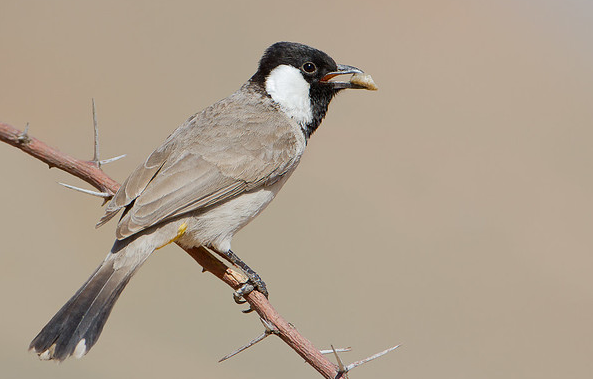The White-cheeked Bulbul (Pycnonotus leucogenys) is a charming and melodious bird species that holds the prestigious title of Bahrain National Bird. Found throughout the Arabian Peninsula, the White-cheeked Bulbul is a symbol of the region's natural beauty and diverse avifauna. In this article, we will explore the characteristics, behavior, and habitat of the White-cheeked Bulbul, and address some frequently asked questions related to this fascinating species.
Characteristics of Bahrain National Bird
The White-cheeked Bulbul is a small bird, measuring around 20 centimeters in length and weighing between 25-35 grams. It has a distinctive appearance, with a black head, white cheeks, and a yellow-tinged underside. The bird's tail is long and features a white tip, while its stout bill is well-suited for consuming various food sources.
Behavior of Bahrain National Bird
White-cheeked Bulbuls are known for their pleasant, melodious calls, which can be heard throughout the day. They are active and social birds, often seen in pairs or small groups. These birds are territorial and may exhibit aggressive behavior towards other birds, especially during the breeding season.
Diet of Bulbul
The diet of the White-cheeked Bulbul is varied, consisting of fruits, seeds, insects, and nectar. They are known to be opportunistic feeders and are often found foraging in gardens and agricultural fields.
Habitat of Bahrain National Bird
White-cheeked Bulbuls thrive in a range of habitats, including gardens, parks, scrublands, and semi-desert areas. They can be found throughout the Arabian Peninsula, including Bahrain, Oman, the United Arab Emirates, and parts of Iran and Pakistan.
FAQs:
1. What is the conservation status of the White-cheeked Bulbul?
The White-cheeked Bulbul is currently listed as a species of "Least Concern" by the International Union for Conservation of Nature (IUCN). This means that the species is not currently facing any significant threats to its survival.
2. What is the breeding season for White-cheeked Bulbuls?
The breeding season for White-cheeked Bulbuls typically occurs between March and July. During this time, the birds build cup-shaped nests in trees or shrubs, where they lay two to four eggs. Both parents participate in incubating the eggs and raising the chicks.
3. How long do White-cheeked Bulbuls live?
The average lifespan of a White-cheeked Bulbul in the wild is around 3-5 years. However, some individuals may live longer, depending on factors such as predation and environmental conditions.
4. Are White-cheeked Bulbuls migratory birds?
White-cheeked Bulbuls are primarily resident birds, meaning they do not undertake long-distance migrations. However, they may exhibit local movements in response to changes in food availability or habitat conditions.
Conclusion:
The White-cheeked Bulbul, Bahrain national bird, is a captivating species that showcases the region's rich biodiversity. With its melodious calls and distinctive appearance, this charming bird continues to enchant both locals and visitors alike, serving as a symbol of the natural beauty found throughout the Arabian Peninsula.
